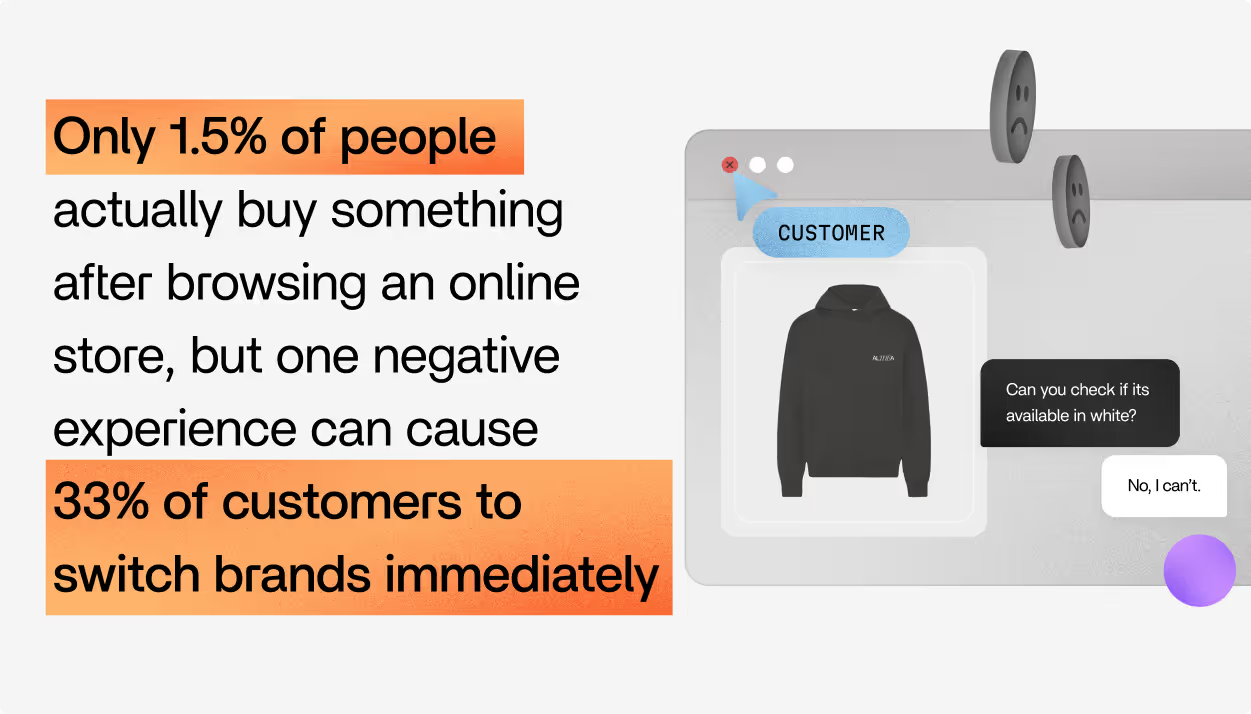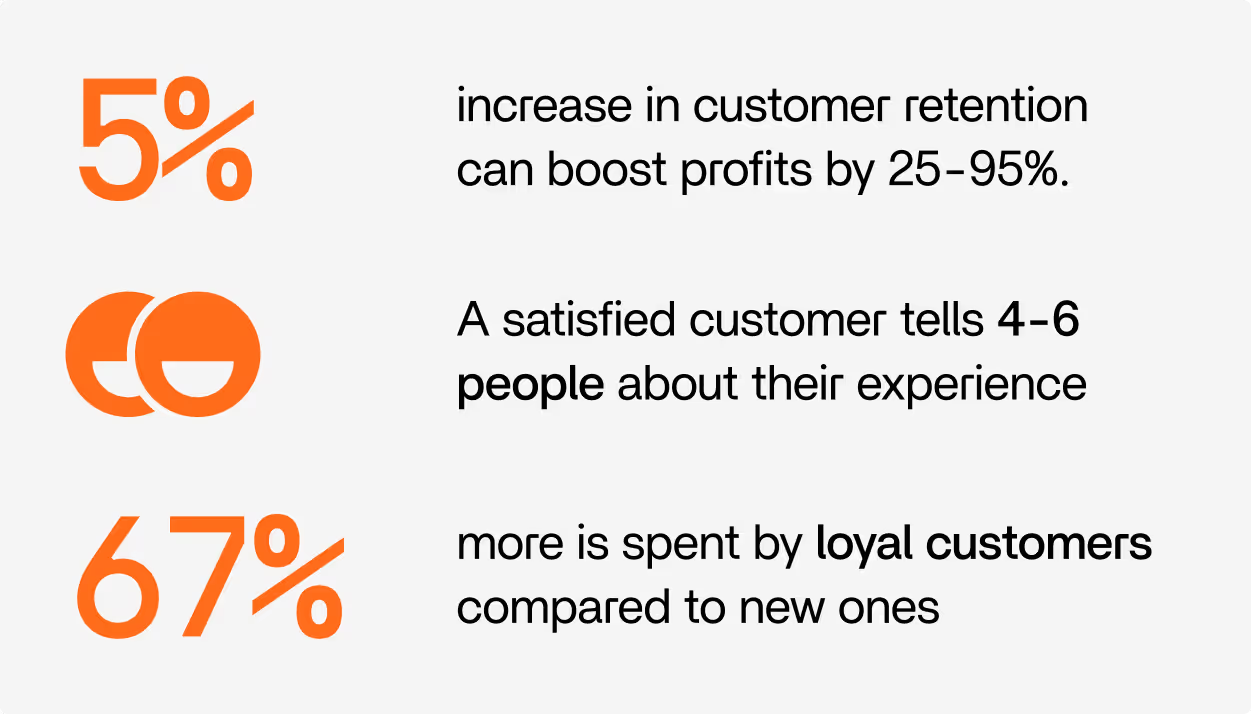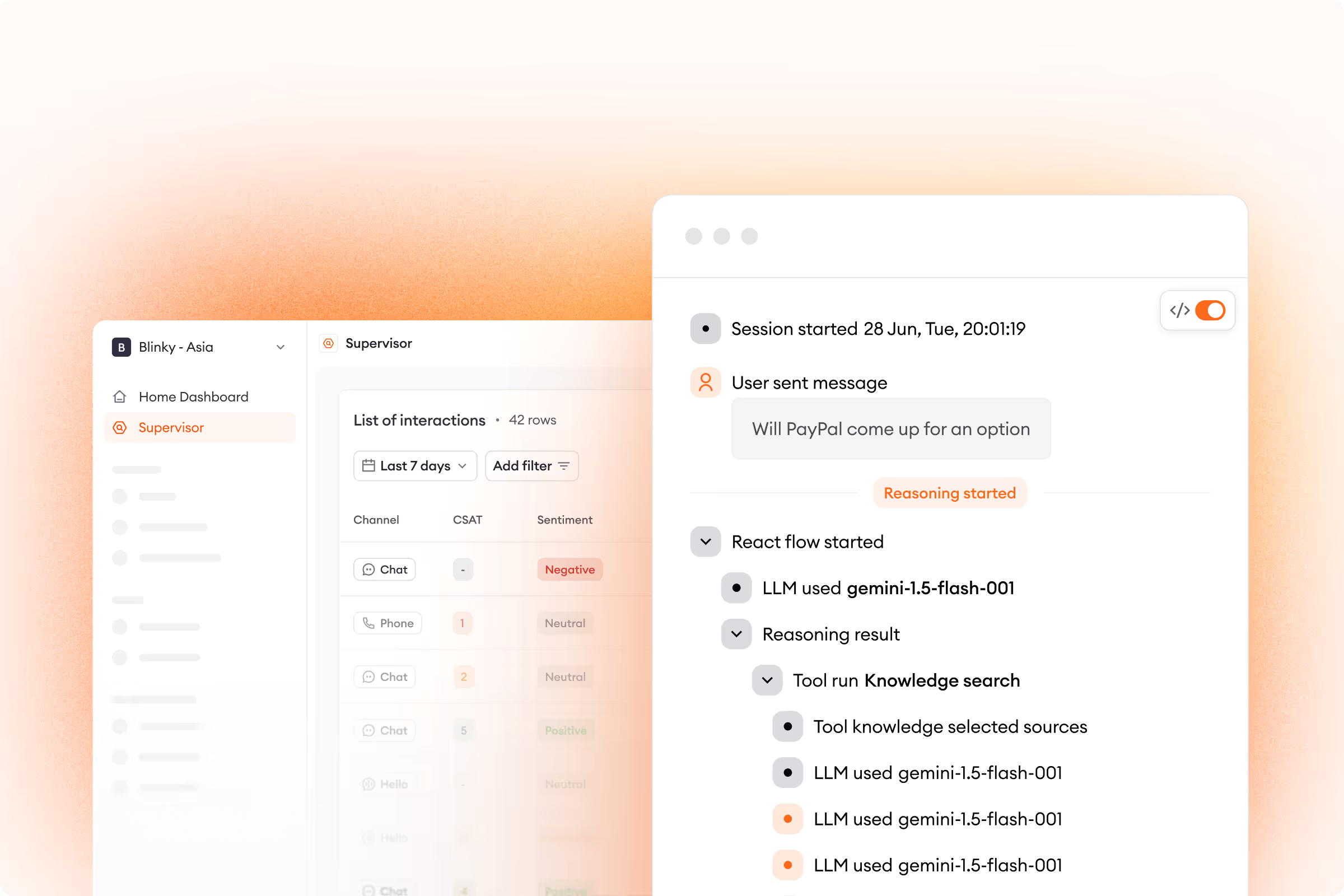Customer service isn't what it used to be. Gone are the days when support teams simply answered questions, solved problems, and the whole department was seen as a cost center.
Innovative companies are currently transforming their customer service departments into powerful marketing engines that drive revenue, create brand advocates, and fuel organic growth.
Changes in the customer service landscape
Only 1.5% of people actually buy something after browsing an online store, but one negative experience can cause 33% of customers to switch brands immediately. This means that if you want long-term growth, making a good impression at every step of the buying journey is essential.
It’s a challenging environment, where traditional customer service models are no longer enough. Customers expect:
- Immediate responses and 24/7 support availability
- Personalized interactions regardless of channel
- Seamless experiences from first touch to post-purchase support
The cost of not meeting these expectations compounds. Billions are lost annually due to poor customer service, with some reports estimating $75 billion in lost business per year.

It’s all about customer loyalty
Acquiring a new customer costs 5x more than retaining an existing one. And yet, many companies still prioritize acquisition over retention. If you’re only ever focused on getting new customers, you’re missing out on the compound benefits of customer loyalty:

An even more magical moment is when customers become brand advocates. While a dissatisfied customer tells 9-15 people about their bad experience, satisfied customers who receive exceptional service become vocal champions.
They defend your brand against criticism, recommend you to friends and family, share positive stories about your company, and leave glowing reviews on public platforms.
Sometimes, to win that kind of loyalty, all you need to do is respond immediately – but with traditional customer service, this used to be nearly impossible.
The AI advantage in modern customer service
Customer service is one of the areas where AI has seen the most adoption. With AI, CS departments have much greater capabilities to deliver exceptional service at scale.
Take Wuffes, for example. Their 5-day response times were damaging their brand reputation, causing negative reviews and social media comments. By empowering their team with AI-powered support, they achieved:
- 92% of tickets answered within 30 minutes
- 10% reduction in subscription cancellations
- Significant increase in their Trustpilot rating by a full point
- Transformed frustrated customers into vocal advocates
Their service went from disappointing to so good that it won back customers. Both in the short and long term, properly implemented AI improves customer service in many different ways:

From reactive service to proactive
With AI support, customer service agents don’t have to wait until problems occur.
Thanks to the combination of data analysis and content generation capabilities, a modern platform allows you to predict whenever customers are having problems. Then, either a human or AI agent can reach out, help, and take the opportunity to up- or cross-sell.
Because of this, you customer service team gains the ability to:
- Identify browsing patterns that indicate confusion
- Offer help at critical moments
- Prevent problems before they occur
- Follow up on abandoned carts
- Check in after purchases
Going back to the Wuffes example, their transformation shows the power of this approach. Their chatbot prevents subscription cancellations by identifying the reason for cancellation and offering real-time solutions, which saves 10% of would-be canceled subscriptions. A great example of proactive support.
The conversational commerce revolution
The way people interact with businesses keeps changing. Instead of clicking through menus or filling out forms, we’re gradually returning to natural conversations. This shift represents a major opportunity for brands that adapt quickly.
Traditional interfaces force customers to navigate through multiple pages by clicking:
Homepage → Category → Subcategory → Filter → Product
Modern conversational interfaces simplify the journey:
"I need a waterproof jacket for hiking under $200" → Product
When customers can just ask for what they want, it speeds up the buying process greatly. Plus, it creates opportunities for personalized recommendations that truly feel helpful, and not pushy.

Practical steps to transform your service
Ready to transform your customer service into a marketing engine? Here's how to start:

Identify your most common customer questions, find repetitive tasks that can be automated, and set specific KPIs to measure success.

Use AI to analyze customer behavior patterns, train the AI with your brand voice, use customer history to provide context, and make your AI agent feel like it’s part of your company.

Let AI handle routine questions, and make sure that AI swiftly delegates the more complex cases it can’t solve to humans.

Standard customer service metrics apply, like resolution rates, response times, customer satisfaction scores, or customer lifetime value. Additionally, you want to measure specific metrics relevant to your use case – like number of upsells, click through on product recommendations, and others.
The future is now
The results speak for themselves. Companies that empower their service departments with AI tools can achieve results such as:
- $3M in new revenue
- 92% of tickets answered within 30 minutes
- 57% drop in wait time across all channels
It’s already happening. The question for you is when, and how will you transform your customer service into a marketing engine?
.avif)







